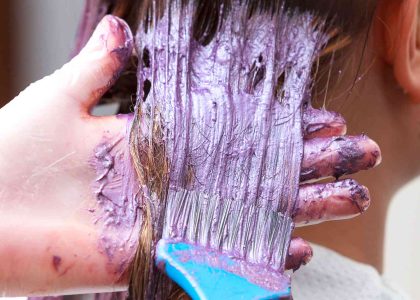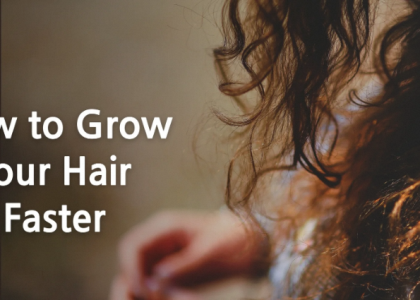How Fast Does Hair Grow? Unveiling the Mystery of Hair Growth
Hair growth might seem like a slow and steady process, but there’s more to it than meets the eye. The rate at which your hair grows depends on a surprising number of factors, from genetics to diet and even your age. Here, we’ll delve into the fascinating world of hair growth, exploring the average rate, the factors influencing it, and tips to optimize your hair’s growth potential.
The Hair Growth Cycle: Understanding the Phases – A Microscopic Journey
Hair growth is a fascinating biological marvel occurring right on your scalp. It follows a well-defined cycle with three distinct phases, each playing a crucial role in determining your hair’s length, health, and overall growth rate. Let’s take a closer look at these phases:
1. Anagen (The Growth Phase): The Powerhouse of Hair Production
-
The Star of the Show: The anagen phase is the prime time for hair growth. Here, the hair follicle, located deep within the scalp, goes into overdrive. Specialized cells at the base of the follicle, called papilla cells, multiply rapidly, producing new hair cells.
-
Growth Spurt: As these new hair cells are pushed upwards, the existing hair shaft on your scalp lengthens. The duration of the anagen phase determines your hair’s maximum potential length. For scalp hair, the anagen phase can last anywhere from 2-7 years. Genetics play a major role in determining the length of this phase.
-
Variations Exist: The anagen phase isn’t uniform across the scalp. Some follicles might be in the anagen phase while others are resting. This staggered growth pattern is why we don’t experience all our hair shedding and regrowing at once.
2. Catagen (The Transition Phase): A Short Farewell
-
Shifting Gears: The catagen phase is a brief transitional period between active growth and resting. It typically lasts only around 2 weeks. During this time, the hair follicle begins to shrink and detach from the blood supply that nourishes it.
-
Growth Slowdown: Hair growth slows down significantly during the catagen phase. The hair follicle essentially goes into a preparatory mode for the resting phase.
-
Universal Experience: The catagen phase is a universal experience for all hair on your body, not just scalp hair. This explains why eyelashes and eyebrows, which have a shorter anagen phase, don’t grow as long as scalp hair.
3. Telogen (The Resting Phase): Letting Go and Preparing for Renewal
-
Dormant Stage: The telogen phase is the resting phase, where hair growth completely stops. The hair follicle is inactive and no longer attached to the blood supply. The hair strand remains anchored in the follicle but is essentially dead.
-
Natural Shedding: The telogen phase typically lasts for about 3 months. After this period, the hair naturally sheds to make way for a new hair to grow from the same follicle. This shedding is a normal part of the hair growth cycle, and we lose an average of 50-100 hairs per day.
-
Signaling Renewal: While the hair itself isn’t growing during the telogen phase, the follicle isn’t completely dormant. It’s actually preparing to re-enter the anagen phase and begin a new growth cycle.
The Average Rate of Hair Growth: A General Guideline
The 0.5 Inch Benchmark: On average, healthy scalp hair grows at a rate of approximately 0.5 inches (1.25 cm) per month. This translates to roughly 6 inches (15 cm) of growth in a year. However, it’s important to remember that this is just a general guideline.
Individual Variations: Hair growth rate can vary significantly from person to person. Genetics play a major role, with some individuals naturally experiencing faster growth than others. Age, hormones, diet, and overall health can also influence how quickly your hair grows.
Unveiling the Mystery: So, why the “half-inch mystery”? This average is derived from studying the anagen phase (growth phase) duration in a population group. However, several factors contribute to variations:
-
Staggered Growth: As mentioned earlier, hair follicles on your scalp aren’t all in sync. Some might be in the active growth phase (anagen) while others are resting (telogen) or transitioning (catagen). This staggered growth pattern means hair isn’t constantly growing at the same rate on your entire head.
-
Shedding During Growth: Even during the anagen phase, some hair shedding is normal. This can happen due to brushing, styling, or simply reaching the natural end of the telogen phase (resting phase) within a follicle. Therefore, the visible growth might be slightly less than the actual growth rate.
-
Hair Type Matters: Hair type can also influence the perceived growth rate. For example, coarse hair might appear to grow faster simply because the strands are thicker and more noticeable. Conversely, fine hair might seem to grow slower due to its delicate nature.
Factors Influencing Hair Growth: Beyond Genetics
While genetics play a major role in determining your hair’s natural growth rate, several other factors influence how fast your hair grows:
-
Age: Hair growth tends to slow down with age. The anagen phase shortens, and hair follicles might become less productive.
-
Hormones: Hormonal fluctuations can impact hair growth. For example, pregnancy, menopause, and thyroid issues can all affect hair growth rate.
-
Diet and Nutrition: A balanced diet rich in essential nutrients like protein, iron, and vitamins is crucial for healthy hair growth. Deficiencies in these nutrients can hinder hair growth.
-
Stress: Chronic stress can disrupt the hair growth cycle and lead to increased hair shedding.
-
Scalp Health: A healthy scalp promotes healthy hair growth. Factors like dandruff, scalp conditions, and excessive dryness can inhibit hair growth.
-
Hair Care Practices: Harsh chemical treatments, frequent heat styling, and tight hairstyles can damage hair and hinder growth.
Optimizing Hair Growth: Tips for Healthy Hair
By understanding the factors influencing hair growth, you can take steps to optimize your hair’s potential:
-
Maintain a Balanced Diet: Eat a healthy diet rich in protein, iron, vitamins A, C, D, and E. These nutrients are essential for healthy hair growth.
-
Manage Stress: Chronic stress can take a toll on your hair. Practice stress-management techniques like yoga or meditation.
-
Gentle Hair Care: Be gentle with your hair. Avoid harsh chemical treatments, excessive heat styling, and tight hairstyles.
-
Scalp Care Matters: Maintain a healthy scalp by using a gentle shampoo and conditioner. Regular scalp massages can also improve circulation and promote hair growth.
-
Consider Supplements: If you suspect nutrient deficiencies, talk to your doctor about hair growth supplements.
-
Patience is Key: Hair growth is a gradual process. Don’t expect overnight results. Stick to a healthy hair care routine and be patient.
Remember, a healthy lifestyle and a gentle hair care routine are crucial for promoting optimal hair growth.
Addressing Hair Loss Concerns
While focusing on hair growth is important, some might experience hair loss concerns. Here are some additional resources to explore:
-
Talk to Your Doctor: If you experience excessive hair loss, consult your doctor to rule out any underlying medical conditions.
-
Hair Loss Treatments: There are various hair loss treatments available, depending on the cause. Talk to a dermatologist for personalized advice.
By understanding the factors influencing hair growth and taking proactive steps, you can create a personalized hair care routine to promote healthy, strong hair that reaches its full growth potential.





